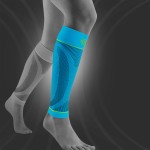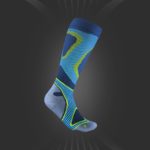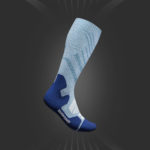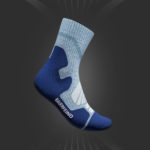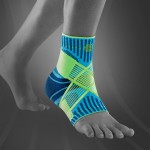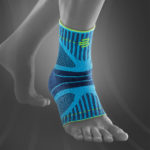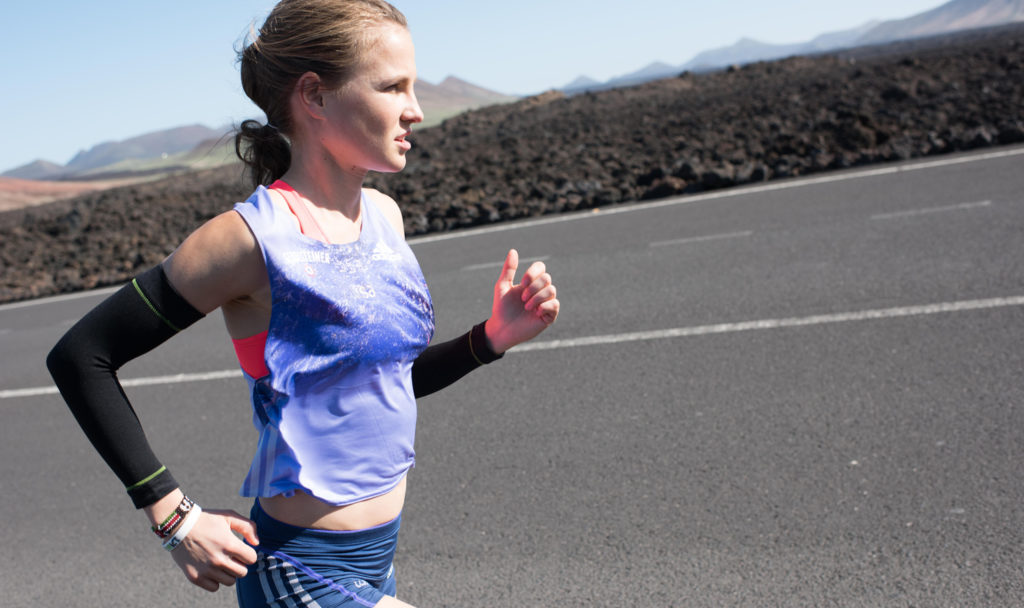
“This will help me progress”
Marathon runner Lisa Hahner adapts her running route perfectly to her training targets.
Lisa Hahner can find her #myperfecttrail anywhere. The most important thing for her is that the route perfectly prepares her for the next marathon.
Lisa, what is a typical training week for you? What do you focus on? And what do you do to complement it?
Normally, I do two endurance sessions a day, this could be two running sessions or a combination of running, cycling, or swimming. Then, I have a strength training session that can be either intensive or focused on stretching. For coordination I go on the slackline or sometimes I play football, which I love doing.
How many kilometers do you do in a training week?
When I’m directly preparing for the marathon, I run up to 200 kilometers in my peak weeks. So, my individual runs are usually around 45 kilometers, a little over the distance of a marathon. I also sometimes treat myself to a free afternoon and there are days when I only run 20 kilometers. But obviously the focus is on the running; other types of training are less important.
How do you structure your running sessions specifically?
I combine speed with endurance, doing sprints of 100 meters and intervals that are up to five kilometers long. I also do short runs of ten kilometers and of course the long runs.
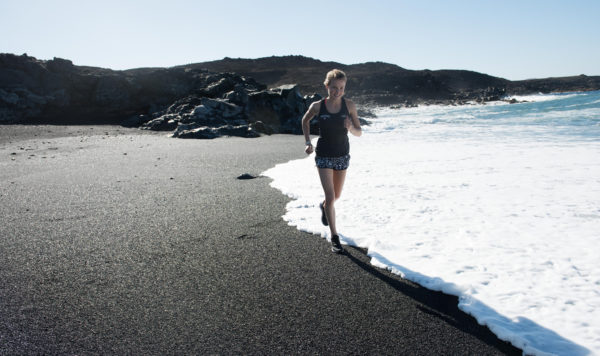
What does your perfect running trail look like?
For me that always depends on what type of training I’m doing at the time and what I would like to achieve. If I want to run as quickly and consistently as possible, I would go for an asphalt trail. But if I want a training session with various challenges, I would choose a hilly route, especially one with different terrains.
What challenges do you set yourself for training?
On routes with a lot of curves I practice my acceleration for example, or I purposefully lose my rhythm and practice finding it again as quickly as possible.
Training routes with long straights can be a challenge because of the lack of milestones. You are basically alone with the route and have to try to turn off your mind. Running consistently is the focus in this case; even that is a challenge.
My competition takes place on asphalt.
How do you go about running on various terrains? How do you choose which is most suitable for your current training session?
My main run is the marathon and my competition takes place on asphalt. That’s why running on the street is an important component in my training. Nevertheless, I try to find a bit of variety. The terrain is, so to speak, what makes the training session exciting, the landscape determines the speed. You have to challenge your body in many ways to force it to adapt.
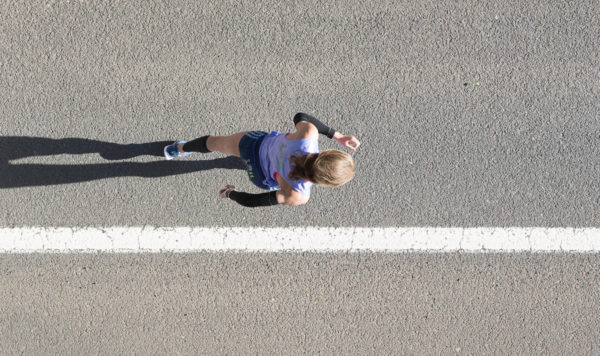
Do your running routes change according to your level of training, level of fitness, or where you are in the season?
The more specifically my training is geared toward a marathon, the more I prefer running routes that I can plan exactly. The distances are around 35 kilometers or more – and sometimes as long as a marathon. After a big competition, I prefer to switch to freestyle mode. I run more spontaneously, without knowing exactly how far and, most importantly, where the route leads me. I mostly run about 20 kilometers when this is the case.
Has it ever happened that your training route was too demanding?
It does happen sometimes! If I simply start running and have no idea what the route profile looks like, then it can happen that afterward I’m thinking: “Wow, that was incredibly hilly!” But then I say to myself: “It’s all good practice.” So, it still fits in well with my training – I just balance out training sessions like these in the following days. You always have to be positive about the route. Never think: “Oh no, this is too hard,” instead see it as a challenge and think: “Okay, this will help me progress” and make the best out of it.
The feeling I get while I’m running is what makes the route appealing.
You must also have some specific favorite routes. Can you give an example?
I have several favorite routes. One of them is in Kenya, a wonderful nature experience. The route goes by a small lake and it’s very hilly. I’ve run there very often and have a lot of good memories of the route. That’s why the feeling I get while I’m running is what makes the route appealing.
Another favorite route of mine is at home where my family lives. A round route on which I’ve memorized every stone. I know exactly when I’ve done one and half kilometers or at what point I’ve been running for 17 minutes. I can see what’s new, what’s going on in the village and what’s changed since last time. That’s something really special; I really feel at home. That is #myperfecttrail.
How far can my body go? How far can my legs take me?
Do you have plans to go the extra mile? Specifically, what is your longest run?
I used to always think: 42.195 kilometers and not a step more. But then at some point my trainer wanted me to do 45 – and I ran it. I think it’s all about the mental side. You need the right attitude.
At the moment, more than 45 kilometers isn’t necessary, but I would be keen to push my limits – how far can my body go? How far can my legs take me? I want to find out through trail competitions for example, which would probably be 60 or even 80 kilometers. But that’s something far in the future.



